Mary Harrod is Assistant Professor in French Studies at the University of Warwick. She is co-editor of the collection The Europeanness of European Cinema: Identity, Meaning, Globalization (I.B.Tauris, 2015) and has published book chapters and journal articles in the areas of European and US cinemas and television, with a focus on gender studies, transnational cultural exchange, language and the relationship between aesthetics, spectatorial engagement and ideology.
Mary Harrods investigation of the French rom-com over the past two decades is a tour de force. In her unlayering of the complexities of contemporary socio-sexual life as revealed in the rom-com, she clearly delineates the French specificities of this most transnational of genres. Not only does she demonstrate how the rom-com provides an accurate social barometer of human relationships in contemporary France, in so doing she also makes clear the relevance of an academic study of this much neglected genre which speaks to the social culture of its time around such challenging issues as love, marriage, divorce, parenthood, gender and queer relations, and the impact of new technologies and legislation on human connections.
Susan Hayward, Modern Languages Department, University of Exeter
Mary Harrods wide-ranging survey brings out the many contradictions and tensions of the contemporary French rom-com. With its focus on shifting gender roles, the importance of the family unit, and the relationship with the US rom-com, this book is essential for an understanding of popular French cinema.
Phil Powrie, Professor of Cinema Studies, University of Surrey
Harrods groundbreaking book puts French romantic screen comedy into stimulating analysis, making a compelling case that this popular genre is vital to understanding Frances recent filmmaking.
Tim Palmer, Professor of Film Studies at the University of North Carolina Wilmington, and author of Brutal Intimacy: Analyzing Contemporary French Cinema (2011) and Irreversible (2015)
From France with Love
Gender and Identity in French Romantic Comedy
By Mary Harrod
Published in 2015 by
I.B.Tauris & Co. Ltd
London

New York
www.ibtauris.com
Copyright 2015 Mary Harrod
The right of Mary Harrod to be identified as the author of this work has been asserted by the author in accordance with the Copyright, Designs and Patents Act 1988.
All rights reserved. Except for brief quotations in a review, this book, or any part thereof, may not be reproduced, stored in or introduced into a retrieval system, or transmitted, in any form or by any means, electronic, mechanical, photocopying, recording or otherwise, without the prior written permission of the publisher.
Every attempt has been made to gain permission for the use of the images in this book. Any omissions will be rectified in future editions.
References to websites were correct at the time of writing.
International Library of the Moving Image 31
ISBN: 978 1 78453 358 8
eISBN: 978 0 85773 990 2
A full CIP record for this book is available from the British Library
A full CIP record is available from the Library of Congress
Library of Congress Catalog Card Number: available
For Marion and Jeric.
Contents
Figures
Acknowledgements
My heartfelt thanks go to all those who have supported me before and during the six-year process of this research and writing, which encompassed the birth of two children. These include my wonderful (step-/)parents Marion, Jeric and Ian; my husband Hugo, who sat through films in the wrong genre and language, provided an astute sounding board and was generally a romantic hero in all the ways that matter; my children Elodie and Kit themselves; and Tanya and Henry Harrod for their priceless help in looking after them. I also wish to thank colleagues, several of whom have contributed to the genesis of the book, including many people from Kings College London whose approaches have helped shape my own and who have supported me in numerous other ways, especially Sarah Cooper, Michele Pierson, Richard Dyer and Beln Vidal, as well as current colleagues from the University of Warwick. I am indebted to the Arts and Humanities Research Council for funding the research, Peter Graham and Nick and April Bueno de Mesquite for the enormously generous loans of their flats in Paris, Yvonne Tasker, Steve Wheeler, Carrie Tarr and Phil Powrie, as well as whole the editorial board of Studies in French Cinema , for excellent feedback on earlier drafts of part or all of the book, Philippa Brewster and Anna Coatman at I.B.Tauris for their interest in and helpful suggestions for it and especially Raphalle Moine, for inspiring the research, for her positive and perceptive reactions to my work as a whole and for going out of her way to promote it in France. I also thank the librarians of Senate House and the Maughan Libraries; my students, who have brought new and rich perspectives; and many extraordinary personal friends who continue to inspire me in all sorts of ways. But my biggest thanks of all go to Ginette Vincendeau, whose guidance and kindness have exceeded all duty and who has been absolutely instrumental in the romance of learning that gave rise to this book.
Introduction
French filmmaking and love stories have often gone hand in hand. However, a form of film more readily identifiable with the internationally recognisable rom-com genre than were earlier examples has proliferated in France since the 1990s. On the one hand, this development can be seen in the context of the increasingly transnational nature of cinema. On the other, the phenomenon coincides with a period characterised by an identity crisis unprecedented in human history, one with both a global reach and specific resonance in France, provoked by the movement away from clearly delineated gender roles (Badinter 2010: 12). Since romantic comedy is a genre focused on coupling culture, its French variant can be expected to respond to this crisis. This book seeks to examine the factors behind and implications of the spectacular rise of the rom-com in France in the 1990s and 2000s, as it pertains to the film industry and to the issue of generic definitions, as well as more generally in terms of representations.
In probing the significance of the contemporary French rom-com, this study not only takes stock of a new development; it also represents an intervention into the field of French film studies, in that popular cinema (and comedy in particular) originating in France has to date suffered from neglect by scholarly research. According to Richard Abel, most historians would agree that it was the French who almost singlehandedly created film comedy (1984: 220). Moreover, Susan Hayward has shown how the genre has consistently outperformed others in the domestic market and, specifically, been a key factor in the national mainstream cinemas success since 1990, accounting for at least 50 per cent of domestic box office takings to 2002. Since then, too, the genre has year on year accounted for the lions share of production (between 20 and 35 per cent) and comedies have featured in similar proportions in the nations annual box office top 20. No wonder, then, that Hayward remarks on the need for an extended analysis of the processes and ideological function of French comedy, at the time of her writing and still nearly two decades later conspicuous by its absence (2005 [1993]: 3046). By analysing one subgroup within French comedy and, as we shall see, a significant, pervasive and commercially impactful one this research represents a contribution towards redressing the balance between French comedys enormous popularity and its widespread exclusion from academic enquiry.


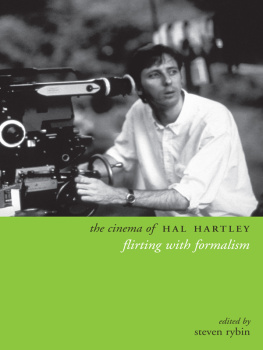
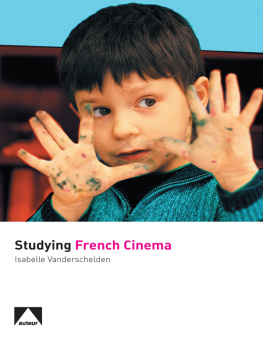
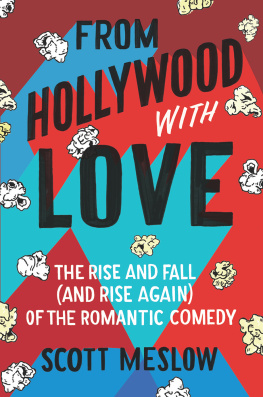

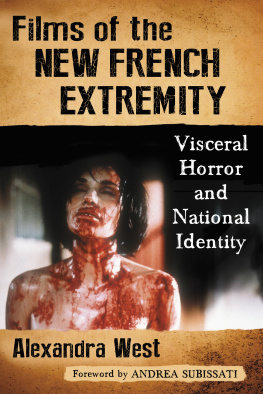
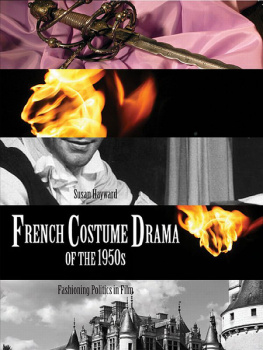


 New York
New York